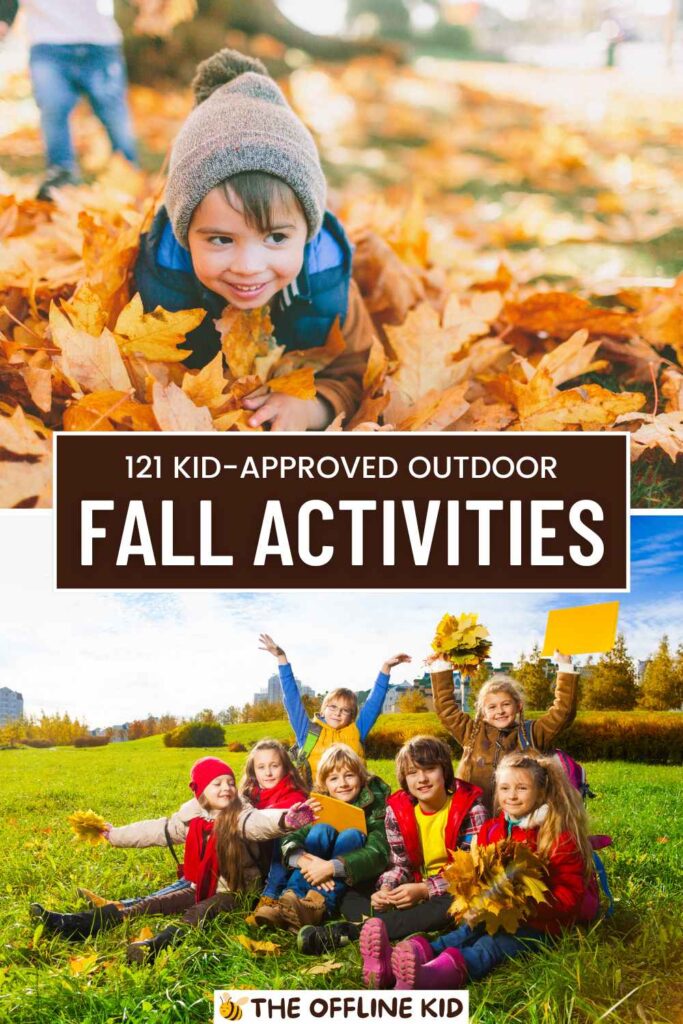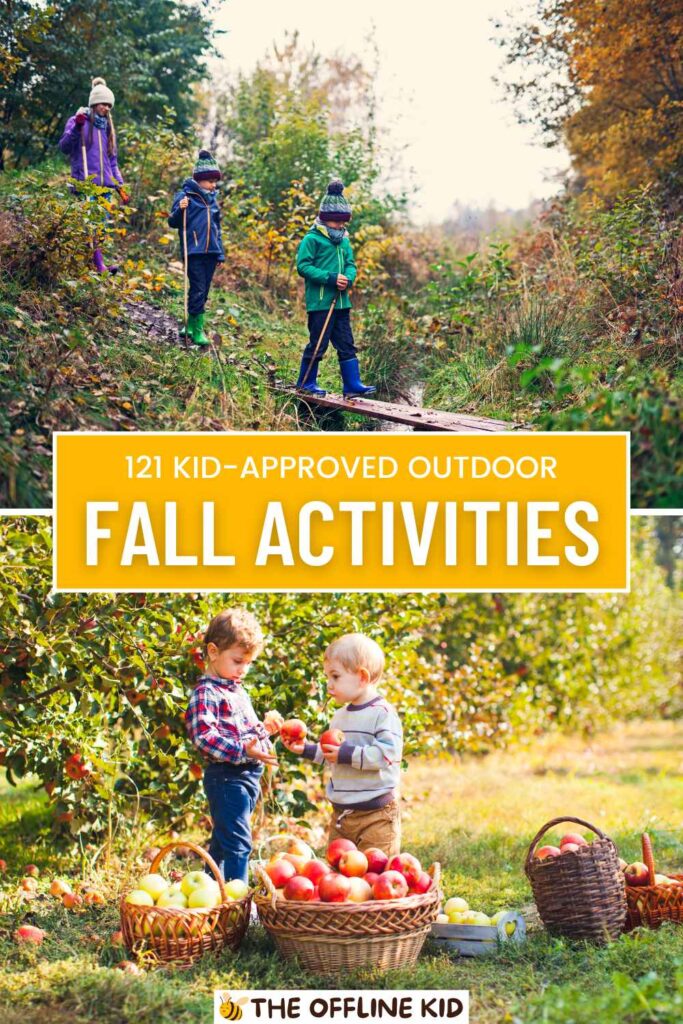Fall is a magical time for kids to explore the great outdoors. This guide offers 121 fun, creative, and educational activities that make the most of the season’s beauty.
From nature walks to pumpkin carving, discover endless ways to enjoy autumn with your little ones.
Nature Exploration
Nature Walks and Hikes
- Forest Trails: Take a walk through a local forest and enjoy the vibrant fall foliage. Collect colorful leaves, listen to the crunching sounds underfoot, and breathe in the fresh autumn air.
- Park Paths: Visit nearby parks and explore their walking trails. These paths are often well-maintained and ideal for young children.
- Urban Nature Trails: Urban areas often have hidden nature trails. These can be a great way to explore the natural world without leaving the city.
Leaf Collecting and Identification
- Creating a Leaf Scrapbook: Collect leaves of different shapes, sizes, and colors. Press them between sheets of wax paper and create a scrapbook, labeling each type of leaf.
- Learning About Different Tree Species: Use a tree identification guide to learn about the trees in your area. Identify trees by their leaves, bark, and seeds.
Bird Watching
- Essential Gear: Equip your kids with binoculars and a bird field guide. Teach them how to use these tools to spot and identify birds.
- Identifying Common Fall Birds: Fall is a great time for bird watching as many species migrate. Look for common fall birds like robins, sparrows, and warblers.
Bug and Insect Hunts
- Using Magnifying Glasses: Encourage kids to explore their backyard or a local park with magnifying glasses. They can observe insects up close and learn about their habitats.
- Learning About Insect Habitats: Discuss where different insects live and what they eat. Create a bug hotel in your backyard to attract and observe insects.
Star Gazing
- Identifying Constellations: Fall skies are often clear, making it perfect for star gazing. Teach your kids to identify constellations like Orion, Cassiopeia, and the Big Dipper.
- Using a Telescope: If you have a telescope, show your kids how to use it to see planets, stars, and the moon up close.
Nature Journaling
- Documenting Observations: Provide your kids with notebooks to document their nature findings. They can draw pictures, write descriptions, and note interesting observations.
- Drawing and Writing About Nature Experiences: Encourage them to express their nature experiences through drawing and writing. This activity helps to develop their observational and artistic skills.
Exploring nature in the fall provides a rich, sensory experience for kids. These activities not only foster a love for the outdoors but also enhance their understanding of the natural world.
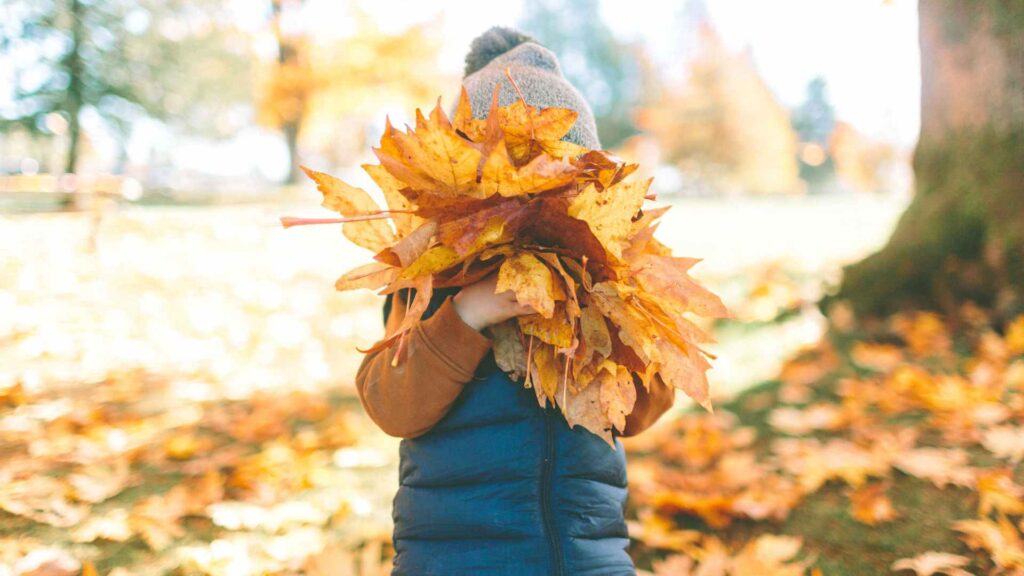
Creative Activities
Leaf Art Projects
- Leaf Rubbings: Gather leaves of different shapes and sizes. Place a leaf under a sheet of paper and rub a crayon over the top to create an imprint. Experiment with different colors and leaf arrangements.
- Leaf Collages: Use collected leaves to create beautiful collages. Glue leaves onto construction paper to make various designs, such as animals, landscapes, or abstract art.
- Leaf Painting: Paint leaves with vibrant colors and press them onto paper to make prints. This activity can help kids explore textures and patterns.
Pine Cone Crafts
- Pine Cone Bird Feeders: Roll pine cones in peanut butter and then coat them with birdseed. Hang them in your yard and watch the birds enjoy their treat.
- Pine Cone Decorations: Decorate pine cones with glitter, paint, or beads to create seasonal ornaments. Use them to make wreaths, centerpieces, or garlands.
Rock Painting
- Finding the Perfect Rocks: Take a walk to find smooth, flat rocks that are ideal for painting. This can be a fun scavenger hunt in itself.
- Creative Painting Ideas: Paint rocks with inspirational messages, fun designs, or transform them into animals and characters. Use acrylic paint and seal with a clear varnish to protect your artwork.
Nature Photography
- Basic Photography Tips for Kids: Teach kids how to use a camera or smartphone to capture the beauty of fall. Discuss concepts like framing, lighting, and perspective.
- Capturing Fall Colors: Encourage kids to take photos of the changing leaves, unique plants, and seasonal wildlife. Create a photo album or slideshow to showcase their work.
Scarecrow Making
- Using Old Clothes and Materials: Gather old clothes, straw, and other materials to build a scarecrow. Stuff the clothes with straw or leaves and use a pumpkin or cloth for the head.
- Scarecrow Decorating Contests: Hold a scarecrow decorating contest with friends or neighbors. Award prizes for the most creative, funny, or scary scarecrows.
Natural Dye Projects
- Using Plants and Flowers: Collect plants and flowers that can be used to make natural dyes. Boil them to extract the colors and use the dyes to color fabric, yarn, or paper.
- Creating Tie-Dye Patterns: Use natural dyes to create tie-dye patterns on shirts, scarves, or other fabric items. Experiment with different folding techniques and color combinations.
Twig and Branch Crafts
- Building Twig Structures: Use twigs and branches to build small structures like fairy houses, picture frames, or star ornaments. Glue or tie the twigs together and decorate as desired.
- Making Nature Mobiles: Create mobiles using twigs, leaves, pine cones, and other natural materials. Hang the mobiles from a branch or dowel and display them in your home or garden.
Seed Art
- Creating Seed Mosaics: Use a variety of seeds to create intricate mosaics. Glue seeds onto a sturdy backing to form patterns, pictures, or abstract designs.
- Making Seed Necklaces: String large seeds or seed pods onto thread to make necklaces. Decorate the seeds with paint or markers to add a personal touch.
Engaging in creative activities using natural materials fosters imagination and artistic skills. These projects allow kids to express themselves while connecting with nature in a hands-on way.
Games and Sports
Classic Outdoor Games
- Tag: Gather a group of kids and play a game of tag. It’s simple, fun, and helps burn off energy. Variations like freeze tag or shadow tag can add extra excitement.
- Hide and Seek: This timeless game is perfect for outdoor settings with plenty of hiding spots. Set boundaries and ensure everyone knows the safe zones.
- Capture the Flag: Divide into teams and try to capture the opponent’s flag from their territory. This game encourages teamwork and strategy.
Ball Games
- Soccer: Set up goals with cones or natural markers and play a friendly game of soccer. It’s great for developing coordination and teamwork.
- Kickball: Similar to baseball but played with a rubber ball, kickball is easy for kids of all ages to enjoy. Set up bases and let the fun begin.
- Baseball: Organize a game of baseball or a simplified version like tee-ball for younger kids. This can be played in a backyard, park, or field.
Frisbee Fun
- Ultimate Frisbee: Play a game of ultimate frisbee, combining elements of soccer and football but with a frisbee. It’s a fast-paced game that’s great for all ages.
- Frisbee Golf: Set up a frisbee golf course using trees, bushes, or other landmarks as targets. Each player takes turns throwing their frisbee towards the target, aiming for the fewest throws.
Obstacle Courses
- Setting Up a Backyard Course: Use household items like chairs, ropes, and hula hoops to create a fun obstacle course. Kids can climb, crawl, jump, and balance their way through the course.
- Using Natural Elements for Obstacles: Incorporate natural elements like logs, rocks, and branches to make the course more challenging and engaging. This encourages kids to interact with their environment.
Scavenger Hunts
- Creating a Fall-Themed List: Make a list of fall-themed items for kids to find, such as acorns, colorful leaves, pine cones, and animal tracks. This activity sharpens observational skills.
- Team Scavenger Hunts: Divide kids into teams and have them compete to find all the items on the list. This can be a fun activity for parties or family gatherings.
Treasure Hunts
- Using Maps and Clues: Create a treasure map with clues leading to a hidden prize. This can be done in a backyard, park, or other outdoor space. Kids will enjoy the adventure and problem-solving aspects.
- DIY Treasure Chests: Make small treasure chests using craft materials and fill them with treats or small toys. Hide the chests and let the kids search for them using the map and clues.
Geocaching
- Introduction to Geocaching: Geocaching is a real-world, outdoor treasure hunting game using GPS-enabled devices. Participants navigate to a specific set of GPS coordinates and attempt to find the geocache (container) hidden at that location.
- Finding Local Geocaches: Register on a geocaching website and find local geocaches to search for. This is a great way to explore new areas and learn about navigation and coordinates.
Camping
- Backyard Camping: Set up a tent in the backyard and enjoy a night under the stars. Bring sleeping bags, flashlights, and snacks for a cozy camping experience.
- Campfire Stories and S’mores: If you have a safe outdoor space for a fire, tell stories around the campfire and make s’mores. This activity combines storytelling, relaxation, and delicious treats.
Nature Relay Races
- Leaf Relay: Have a relay race where kids must carry a leaf without letting it drop. Use a spoon or other tool to increase the challenge.
- Animal Relay: Organize a relay race where each leg of the race mimics a different animal, such as hopping like a bunny, waddling like a duck, or slithering like a snake.
Outdoor games and sports provide physical exercise and a chance for kids to work on their social skills. These activities promote teamwork, strategic thinking, and most importantly, fun!
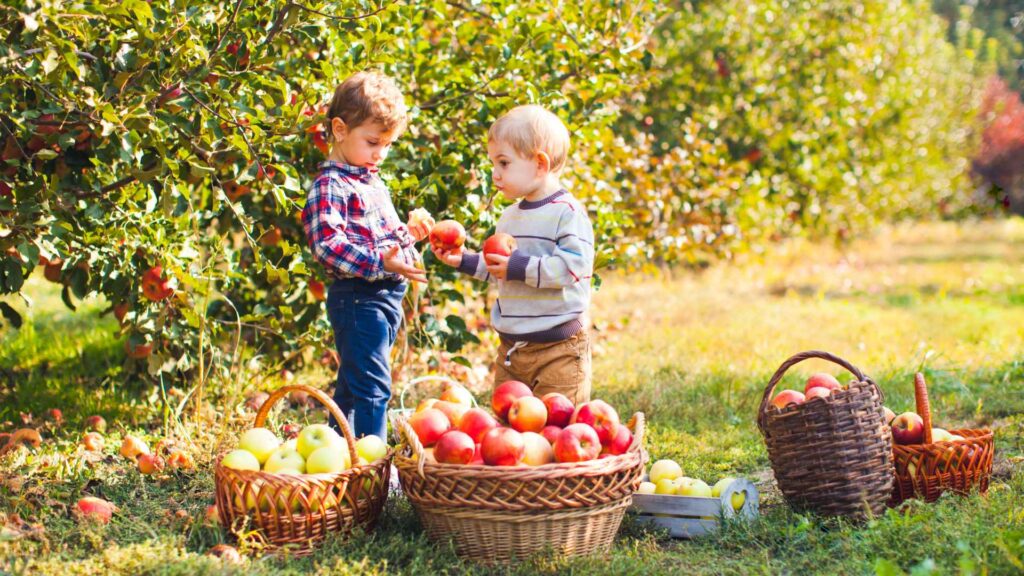
Adventure Activities
Scavenger Hunts
- Creating a Fall-Themed List: Design a scavenger hunt with items that reflect the season, like acorns, pine cones, and different colored leaves. Include tasks like finding a specific type of flower or spotting a particular bird.
- Team Scavenger Hunts: Form teams to make the hunt competitive and exciting. Each team gets a list and a set time to find as many items as possible.
Treasure Hunts
- Using Maps and Clues: Draw a simple map with landmarks and create clues that lead to a hidden treasure. Hide small toys, treats, or themed treasures to make the hunt rewarding.
- DIY Treasure Chests: Craft treasure chests from small boxes and decorate them with paint and stickers. Fill them with goodies and hide them around your yard or a local park.
Geocaching
- Introduction to Geocaching: Explain the basics of geocaching, a global treasure hunt using GPS devices. Show kids how to download a geocaching app and start searching for hidden caches in your area.
- Finding Local Geocaches: Search for nearby geocaches, which are usually listed on geocaching websites. This adventure combines technology with outdoor exploration, making it both fun and educational.
Camping
- Backyard Camping: Set up a tent in your backyard and have a mini camping trip. Roast marshmallows, tell stories, and enjoy sleeping under the stars without leaving home.
- Campfire Stories and S’mores: Build a safe campfire if space and regulations allow. Share spooky or funny stories and make s’mores for a classic camping experience.
Biking Adventures
- Trail Riding: Find local bike trails and plan a biking adventure. Make sure to pack helmets, water, and snacks for a fun and safe ride.
- Bike Races: Organize friendly bike races in a safe, open area. Set up courses with cones or natural markers and encourage kids to challenge each other.
Nature Survival Skills
- Building Shelters: Teach kids how to build simple shelters using branches, leaves, and other natural materials. This can be done in your backyard or at a local park.
- Basic Navigation: Show kids how to use a compass and read a map. Practice navigating to different points using these tools, enhancing their outdoor survival skills.
Fishing
- Basics of Fishing for Kids: Introduce kids to fishing by explaining the equipment and techniques. Find a local pond or lake where fishing is allowed and safe for beginners.
- Best Fall Fishing Spots: Research and visit local fishing spots known for their fall activity. Make it a family outing and enjoy the peacefulness of fishing together.
Horseback Riding
- Finding Local Stables: Look for local stables that offer horseback riding lessons or trail rides. Many places have beginner-friendly options for kids.
- Horse Care Basics: Teach kids about horse care, including feeding, grooming, and saddling. This can be an enriching experience that goes beyond just riding.
Orienteering
- Setting Up an Orienteering Course: Use maps and compasses to set up an orienteering course. Mark different points that kids need to find using their navigation skills.
- Learning to Read Maps: Teach kids how to read topographic maps and understand symbols and scales. This can be a fun and educational adventure activity.
Adventure activities stimulate curiosity and build resilience. They offer kids the chance to learn new skills, explore their environment, and develop a sense of adventure. These activities are not only thrilling but also provide valuable lessons in teamwork, problem-solving, and self-reliance.
Gardening and Farming
Fall Gardening Projects
- Planting Bulbs for Spring: Teach kids how to plant bulbs such as tulips, daffodils, and crocuses. Explain that these will bloom in the spring, giving them something to look forward to.
- Creating a Compost Pile: Start a compost pile with kitchen scraps, leaves, and yard waste. Show kids how composting works and how it benefits the garden.
Harvesting Crops
- Visiting a Local Farm: Plan a trip to a local farm where kids can see how crops are grown and harvested. Many farms offer hands-on activities like picking apples, pumpkins, and other fall produce.
- Picking Apples and Pumpkins: Take part in apple and pumpkin picking. These activities are not only fun but also provide an opportunity to learn about different types of fruits and vegetables.
Building a Scarecrow
- Using Old Clothes and Materials: Gather old clothes, straw, and other materials to build a scarecrow. Involve kids in stuffing the clothes and assembling the scarecrow.
- Scarecrow Decorating Contests: Organize a scarecrow decorating contest with friends or neighbors. Award prizes for the most creative, funny, or spooky scarecrows.
Creating a Vegetable Garden
- Planting Cool-Weather Crops: Plant cool-weather crops like lettuce, spinach, and radishes. Explain how these crops can thrive in cooler fall temperatures.
- Maintaining the Garden: Show kids how to water, weed, and care for their garden. This teaches responsibility and the basics of plant care.
Herb Gardening
- Planting and Caring for Herbs: Plant herbs such as basil, mint, and rosemary. Teach kids how to care for these plants and use them in cooking.
- Creating a Mini Herb Garden: Use pots or small garden beds to create a mini herb garden. This can be a fun project that brings fresh flavors to your kitchen.
Seed Saving
- Collecting Seeds from Plants: Collect seeds from flowers, vegetables, and fruits. Teach kids how to dry and store seeds for planting next year.
- Creating Seed Packets: Make custom seed packets using paper and markers. Label each packet with the plant name and planting instructions.
Flower Arranging
- Collecting Fall Flowers: Gather fall flowers like mums, asters, and sunflowers. Show kids how to arrange them into beautiful bouquets.
- Pressing Flowers: Press flowers between heavy books to preserve them. Use the pressed flowers to create art or decorate cards and gifts.
Garden Art Projects
- Painting Garden Stones: Paint stones to label garden plants or add decorative touches to the garden. Use weather-resistant paint to ensure longevity.
- Making Garden Signs: Create signs for different sections of the garden. Use wood, paint, and markers to make colorful and informative labels.
Worm Farming
- Starting a Worm Bin: Set up a worm bin and teach kids how to care for the worms. Explain how worms help break down compost and enrich the soil.
- Harvesting Worm Castings: Show kids how to harvest worm castings and use them as fertilizer for the garden.
Gardening and farming activities connect kids with the natural world and teach them about the food they eat.
These activities promote responsibility, patience, and a sense of accomplishment as they watch their plants grow and thrive. Plus, the fresh air and hands-on experience are beneficial for their overall well-being.
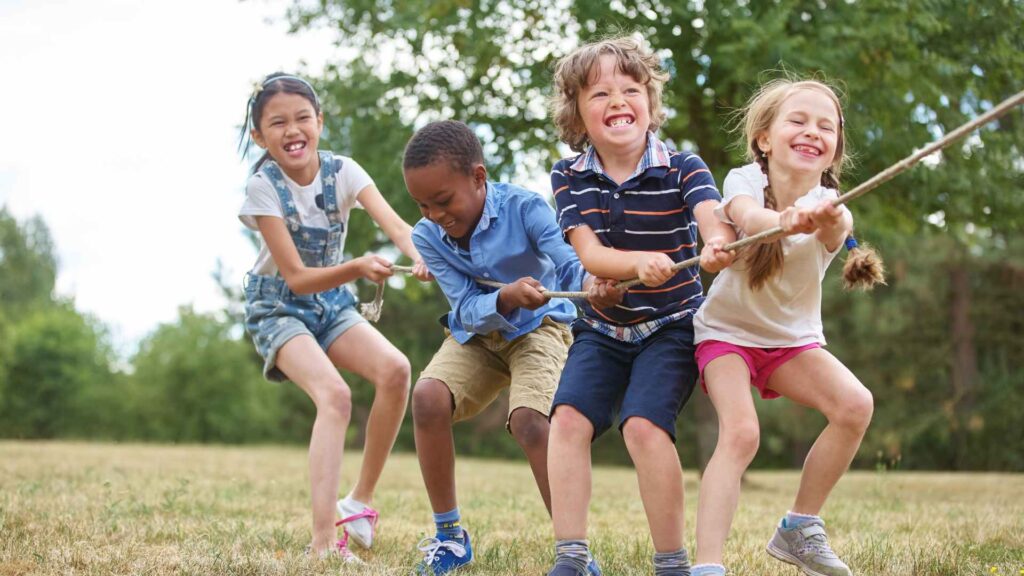
Educational Activities
Science Experiments
- Observing Weather Changes: Create a simple weather station with a rain gauge, thermometer, and wind vane. Track daily weather changes and discuss how weather patterns shift during the fall.
- Creating a Rain Gauge: Use a clear container to measure rainfall. Mark measurements on the container and keep a rain diary to record how much rain falls each week.
Star Gazing
- Identifying Constellations: Fall skies offer clear views of constellations like Orion, Andromeda, and Pegasus. Use star charts or apps to help kids locate these constellations.
- Using a Telescope: Introduce kids to using a telescope to see stars, planets, and the moon up close. Discuss basic astronomy concepts like the phases of the moon and the movement of planets.
Historical Site Visits
- Exploring Local Landmarks: Visit local historical sites to learn about the region’s past. Many places offer guided tours or informational plaques that provide educational insights.
- Learning About Regional History: Discuss the history of your area, including important events and figures. This can be done through visits to museums, historical homes, or outdoor history trails.
Nature Journaling
- Documenting Observations: Encourage kids to keep a nature journal where they can document their observations of plants, animals, and weather. Include drawings, notes, and pressed leaves or flowers.
- Drawing and Writing About Nature Experiences: Use the journal to draw scenes from nature walks or write about their experiences. This activity enhances their observation skills and fosters a love for writing and art.
Bird Watching
- Creating a Bird Feeder: Build a simple bird feeder using recycled materials. Place it in your yard and keep a log of the different bird species that visit.
- Tracking Bird Migrations: Learn about bird migration patterns in the fall. Track the arrival and departure of different species and discuss the reasons behind migration.
Plant Identification
- Using Field Guides: Teach kids how to use field guides to identify different plants and trees. This can be done during nature walks or in your backyard.
- Creating a Plant Diary: Create a diary where kids can record the plants they identify. Include drawings, leaf rubbings, and notes about each plant’s characteristics.
Geology Exploration
- Collecting Rocks and Minerals: Go on a rock hunting expedition to collect different types of rocks and minerals. Teach kids how to identify and classify their finds.
- Creating a Rock Collection: Start a rock collection and display it at home. Use labels to identify each type of rock and where it was found.
Bug and Insect Studies
- Building a Bug Hotel: Construct a bug hotel using natural materials like sticks, leaves, and pine cones. Place it in the garden and observe which insects make it their home.
- Insect Observation: Use magnifying glasses to observe insects up close. Discuss their habits, diets, and roles in the ecosystem.
Water Cycle Exploration
- Creating a Mini Water Cycle: Build a mini water cycle model using a plastic container, water, and a small plant. Cover it with plastic wrap and place it in the sun to observe evaporation, condensation, and precipitation.
- Tracking Local Water Sources: Visit local rivers, lakes, or ponds to learn about the water cycle in action. Discuss how water moves through the environment and its importance to all living things.
Math in Nature
- Measuring Tree Heights: Teach kids to measure tree heights using simple tools like a tape measure and a ruler. Discuss concepts like estimation and scaling.
- Counting and Sorting Leaves: Collect leaves and use them for counting and sorting exercises. Group them by size, color, or type to practice basic math skills.
Educational activities turn the outdoors into a dynamic classroom, providing endless opportunities for learning and discovery. These activities foster curiosity, critical thinking, and a deeper understanding of the natural world, all while keeping kids engaged and active.
Water Activities
Pond Dipping
- Collecting and Observing Pond Creatures: Equip kids with nets, jars, and magnifying glasses to collect and observe pond life such as tadpoles, frogs, and insects. Discuss the importance of these creatures in the ecosystem.
- Learning About Aquatic Ecosystems: Teach kids about the different plants and animals that live in and around ponds. Explain concepts like food chains and habitats.
Skipping Stones
- Finding the Perfect Stones: Take a walk along a river or lake to find flat, smooth stones that are ideal for skipping. This is a great way to combine exploration with a fun activity.
- Techniques for Successful Skipping: Teach kids the best techniques for skipping stones. Show them how to throw the stone at the right angle and with the right spin to make it skip multiple times.
Beach Exploration
- Collecting Shells and Sea Glass: Visit a beach to collect shells, sea glass, and other interesting items. Use these treasures for art projects or simply enjoy the hunt.
- Building Sandcastles: Bring along buckets and shovels for a day of building sandcastles. Encourage kids to get creative with their designs and decorations.
Fishing
- Basics of Fishing for Kids: Introduce kids to fishing by explaining how to use a rod, reel, and bait. Practice casting and reeling in a safe, controlled environment.
- Best Fall Fishing Spots: Research and visit local fishing spots that are particularly good in the fall. Enjoy a peaceful day by the water and teach kids about different types of fish and their habitats.
Stream Exploration
- Wading and Exploring Streams: Find a shallow stream where kids can wade and explore. Look for small fish, insects, and plants. Teach kids to respect the natural environment and avoid disturbing wildlife.
- Building Mini Dams and Boats: Use natural materials like sticks, leaves, and stones to build mini dams or boats. This can be a fun way to learn about water flow and engineering.
Kayaking and Canoeing
- Learning Basic Paddling Skills: If you have access to kayaks or canoes, teach kids basic paddling skills. Start in calm, shallow water and progress to more challenging environments as they gain confidence.
- Exploring Local Waterways: Take a kayaking or canoeing trip to explore local rivers, lakes, or coastal areas. Discuss the importance of water conservation and the impact of pollution on aquatic ecosystems.
Sailing
- Introduction to Sailing: If possible, introduce kids to sailing. Explain the basics of how sailboats work and the different parts of the boat. This can be done through local sailing schools or clubs.
- Sailing Safety: Teach kids about safety on the water, including the importance of wearing life jackets, understanding weather conditions, and basic first aid.
Water Balloon Games
- Water Balloon Toss: On a warm fall day, have a water balloon toss. Pair up kids and have them toss balloons back and forth, taking a step back after each successful catch.
- Water Balloon Relays: Set up relay races where kids must carry water balloons without breaking them. This can be a fun and refreshing way to get active.
Nature Boat Races
- Building Nature Boats: Use natural materials like leaves, sticks, and bark to build small boats. Test their buoyancy and design by floating them in a stream or pond.
- Racing Boats: Organize races by setting a start and finish line in a stream. See whose boat can travel the fastest or the farthest.
Water-Themed Crafts
- Creating Watercolor Paintings: Use water collected from a local stream or pond to create watercolor paintings. Discuss how water is essential for life and its role in the environment.
- Making Aquatic Creature Models: Craft models of fish, frogs, and other aquatic creatures using clay, paper, or other materials. Learn about their anatomy and behavior as you create.
Water activities provide endless fun and educational opportunities. They teach kids about aquatic ecosystems, the importance of water conservation, and basic water safety, all while keeping them engaged and active. Whether by a pond, stream, lake, or beach, these activities can make any fall day an adventure.
Seasonal Celebrations
Pumpkin Carving and Decorating
- Pumpkin Carving Techniques: Teach kids safe carving techniques. Start by drawing a design on the pumpkin and use child-friendly carving tools. Encourage creativity with different faces and patterns.
- Alternative Pumpkin Decorations: If carving is too advanced, try painting pumpkins instead. Use acrylic paints, glitter, and stickers to create unique and colorful designs.
Fall Festivals and Fairs
- Local Events and Activities: Visit local fall festivals and fairs, which often feature hayrides, corn mazes, and petting zoos. These events provide a festive atmosphere and a variety of fun activities.
- Carnival Games and Rides: Enjoy traditional carnival games like ring toss, duck ponds, and bean bag toss. Many fall fairs also have rides like Ferris wheels and carousels that kids will love.
Halloween Fun
- Outdoor Costume Parades: Organize or participate in a neighborhood costume parade. Kids can show off their costumes and enjoy seeing what their friends are wearing.
- Trick-or-Treating Safety Tips: Ensure a safe trick-or-treating experience by going in groups, staying in well-lit areas, and checking all treats before eating them.
Thanksgiving Activities
- Outdoor Thanksgiving Games: Play classic games like sack races, three-legged races, and tug-of-war. These games can be enjoyed by kids and adults alike, making Thanksgiving even more fun.
- Nature-Themed Crafts: Create Thanksgiving decorations using natural materials. Make leaf wreaths, pine cone turkeys, and acorn place cards to add a festive touch to your holiday celebration.
Harvest Festivals
- Visiting a Pumpkin Patch: Spend a day at a pumpkin patch. Many pumpkin patches offer additional activities like hayrides, corn mazes, and petting zoos.
- Apple Cider Tasting: Visit a local cider mill to see how apple cider is made. Sample different types of cider and learn about the cider-making process.
Fall Cooking and Baking
- Making Fall Treats: Involve kids in baking fall treats like pumpkin pie, apple crisp, and cinnamon rolls. These activities are not only delicious but also teach basic cooking skills.
- Cooking with Seasonal Produce: Use seasonal produce like squash, sweet potatoes, and apples to create healthy meals. Teach kids about the benefits of eating seasonally and locally.
Outdoor Movie Nights
- Setting Up an Outdoor Theater: Set up a projector and screen in your backyard for an outdoor movie night. Provide blankets and warm drinks like hot cocoa or apple cider.
- Fall-Themed Movie Suggestions: Choose fall-themed movies or family favorites. Some great options include “It’s the Great Pumpkin, Charlie Brown,” “Hocus Pocus,” and “Coco.”
Bonfire Nights
- Building a Safe Bonfire: If you have the space and it’s allowed, build a bonfire. Teach kids about fire safety and enjoy the warmth of the fire on a cool fall evening.
- Roasting Marshmallows and Making S’mores: Roast marshmallows over the fire and make s’mores. This classic treat is a favorite for all ages and makes any bonfire night special.
Harvesting and Decorating with Gourds
- Picking and Displaying Gourds: Visit a farm or market to pick a variety of gourds. Use them to decorate your home or create festive centerpieces.
- Gourd Craft Projects: Use gourds to make birdhouses, bowls, or other crafts. This can be a fun way to explore their unique shapes and textures.
Creating a Thankful Tree
- Collecting Branches and Leaves: Collect branches and leaves to create a Thankful Tree. Each family member can write something they’re thankful for on a leaf and attach it to the tree.
- Displaying the Thankful Tree: Place the Thankful Tree in a prominent spot in your home as a reminder of gratitude and the spirit of Thanksgiving.
Seasonal celebrations in the fall are rich with traditions and activities that bring families together. These events and crafts create lasting memories and teach kids the importance of gratitude, community, and enjoying the changing seasons. From pumpkin carving to Thanksgiving games, there’s something for everyone to enjoy.
Conclusion
Fall offers a unique blend of vibrant colors, crisp air, and endless opportunities for outdoor fun. By engaging in these 121 activities, kids can experience the magic of the season while learning and growing in the process.
From creative projects and adventurous outings to educational games and seasonal celebrations, there’s something for everyone to enjoy.
Encourage your kids to try as many activities as possible, and don’t be afraid to join in on the fun. Whether it’s a nature walk, a scavenger hunt, or a pumpkin carving session, these moments will create cherished memories for the entire family.
